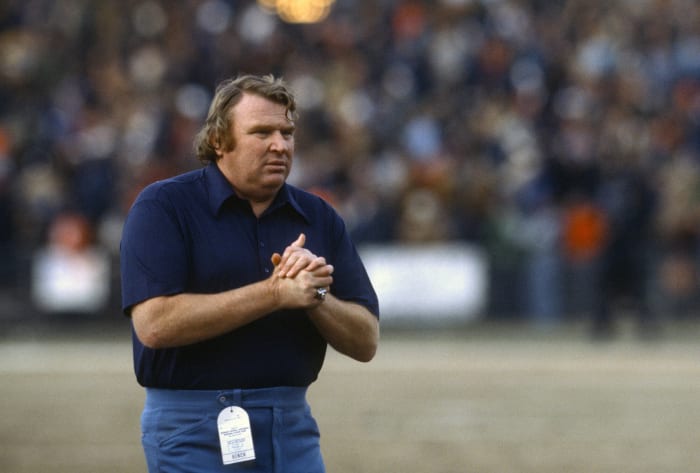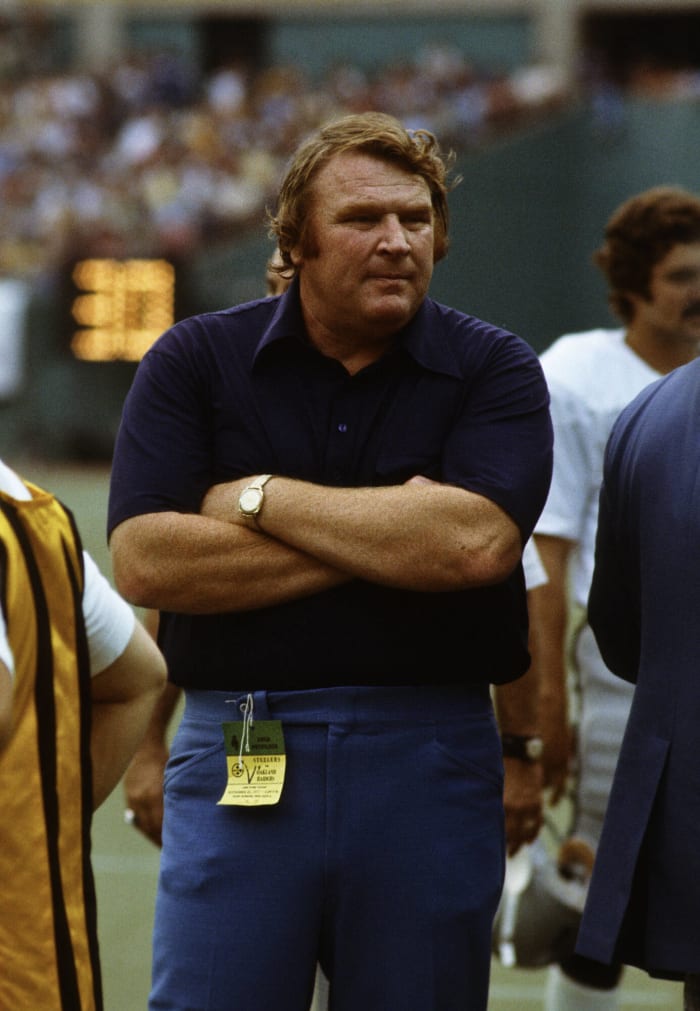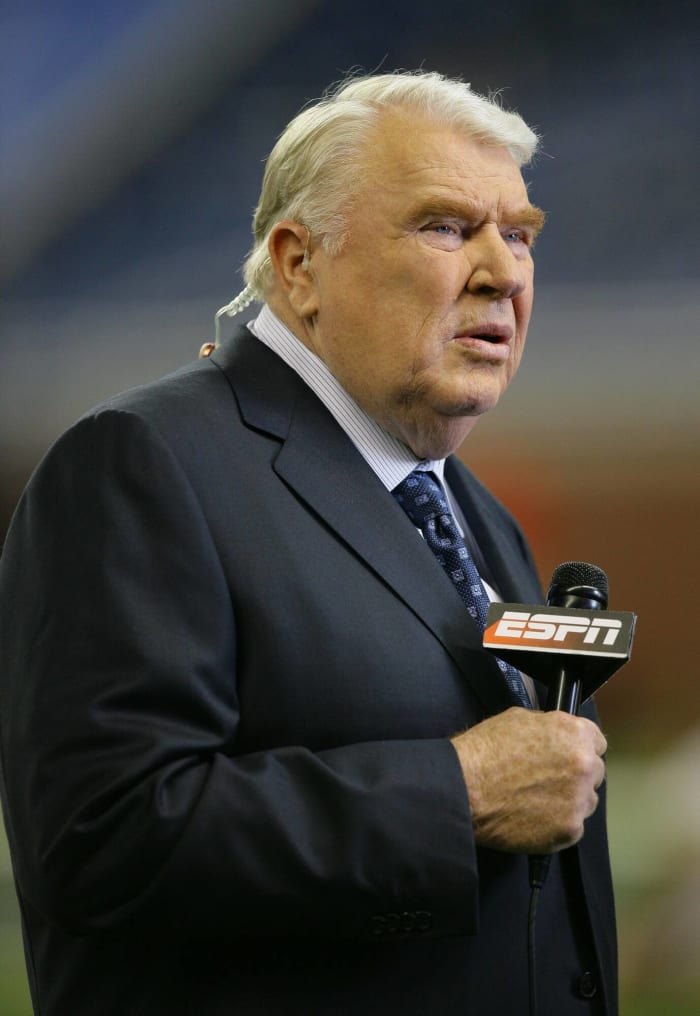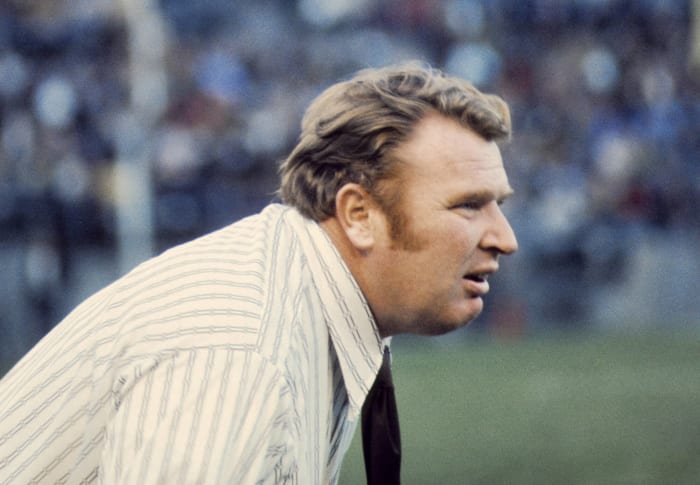- Home
- Quizzes
- My Quiz Activity
- Newsletters
- MY FAVORITES
- Add Sports/Teams
- SPORTS
-
NFL
- NFL Home
- Arizona Cardinals
- Atlanta Falcons
- Baltimore Ravens
- Buffalo Bills
- Carolina Panthers
- Chicago Bears
- Cincinnati Bengals
- Cleveland Browns
- Dallas Cowboys
- Denver Broncos
- Detroit Lions
- Green Bay Packers
- Houston Texans
- Indianapolis Colts
- Jacksonville Jaguars
- Kansas City Chiefs
- Las Vegas Raiders
- Los Angeles Chargers
- Los Angeles Rams
- Miami Dolphins
- Minnesota Vikings
- New England Patriots
- New Orleans Saints
- New York Jets
- New York Giants
- Philadelphia Eagles
- Pittsburgh Steelers
- San Francisco 49ers
- Seattle Seahawks
- Tampa Bay Buccaneers
- Tennessee Titans
- Washington Commanders
-
MLB
- MLB Home
- Athletics
- Arizona Diamondbacks
- Atlanta Braves
- Baltimore Orioles
- Boston Red Sox
- Chicago White Sox
- Chicago Cubs
- Cincinnati Reds
- Cleveland Guardians
- Colorado Rockies
- Detroit Tigers
- Houston Astros
- Kansas City Royals
- Los Angeles Angels
- Los Angeles Dodgers
- Miami Marlins
- Milwaukee Brewers
- Minnesota Twins
- New York Yankees
- New York Mets
- Philadelphia Phillies
- Pittsburgh Pirates
- San Diego Padres
- San Francisco Giants
- Seattle Mariners
- St. Louis Cardinals
- Tampa Bay Rays
- Texas Rangers
- Toronto Blue Jays
- Washington Nationals
-
NBA
- NBA Home
- Atlanta Hawks
- Boston Celtics
- Brooklyn Nets
- Charlotte Hornets
- Chicago Bulls
- Cleveland Cavaliers
- Dallas Mavericks
- Denver Nuggets
- Detroit Pistons
- Golden State Warriors
- Houston Rockets
- Indiana Pacers
- Los Angeles Clippers
- Los Angeles Lakers
- Memphis Grizzlies
- Miami Heat
- Milwaukee Bucks
- Minnesota Timberwolves
- New Orleans Pelicans
- New York Knicks
- Oklahoma City Thunder
- Orlando Magic
- Philadelphia 76ers
- Phoenix Suns
- Portland Trail Blazers
- Sacramento Kings
- San Antonio Spurs
- Toronto Raptors
- Utah Jazz
- Washington Wizards
-
NHL
- NHL Home
- Anaheim Ducks
- Boston Bruins
- Buffalo Sabres
- Calgary Flames
- Carolina Hurricanes
- Chicago Blackhawks
- Colorado Avalanche
- Columbus Blue Jackets
- Dallas Stars
- Detroit Red Wings
- Edmonton Oilers
- Florida Panthers
- Los Angeles Kings
- Minnesota Wild
- Montreal Canadiens
- Nashville Predators
- New Jersey Devils
- New York Islanders
- New York Rangers
- Ottawa Senators
- Philadelphia Flyers
- Pittsburgh Penguins
- San Jose Sharks
- Seattle Kraken
- St. Louis Blues
- Tampa Bay Lightning
- Toronto Maple Leafs
- Utah Hockey Club
- Vancouver Canucks
- Vegas Golden Knights
- Washington Capitals
- Winnipeg Jets
- NCAAF
- NCAAM
- Olympics
- Boxing
- Entertainment
- Lifestyle
- Golf
- MMA
- Soccer
- Tennis
- Wrestling
- Sports Betting
- More Sports
- RESOURCES
- My Account
- YB on Facebook
- YB on Twitter
- YB on Flipboard
- Contact Us
- Privacy Policy
- Terms of Service

John Madden: Career retrospective
John Madden was a man of many hats: Super Bowl-winning head coach of the Oakland Raiders, Emmy Award-winning broadcaster, and the namesake of one of the best-selling video games of all time. Regardless of how you remember the legend, nobody denies his impact on football culture. Let’s take a look at the many careers of a football giant.
A high school star

John Madden was born in Austin, Minnesota, and raised in Daly City, California. The Madden family came from a middle-class background. As a kid, Madden met his lifelong best friend, John Robinson, who would become a fine coach in his own right. Madden attended Jefferson High School, playing lights-out as an offensive tackle. When his high school career was all said and done, Madden attended the University of Oregon on a football scholarship.
College career

Madden was pursuing pre-law as a student-athlete with the Oregon Ducks before a knee injury took him away from the field. Madden transferred to California Polytechnic State University, where he excelled in offense and defense. He earned All-Conference honors as an offensive tackle at Cal Poly and even had a stint on the baseball team as a catcher. Unfortunately, his senior season was cut short thanks to a collarbone injury. Still, he merited the attention of the NFL.
Madden graduated from Cal Poly with a Bachelor of Science in 1959 and a Master of Arts in education in 1961.
Drafted by the Philadelphia Eagles

Despite a knee injury at Oregon and a collarbone injury at Cal Poly, Madden was still seen as a solid prospect. The 6-foot-4 offensive tackle was selected by the Philadelphia Eagles in the 21st round of the 1958 NFL Draft. The call to the NFL came just months before his senior year. After finishing his senior year and playing in the All-American Bowl in January 1959, Madden was heading to the big leagues.
Injuries derail Madden's career

Madden was excited for his first training camp with the Philadelphia Eagles when tragedy struck. A knee injury during a scrimmage at practice ended his playing career before he had a chance to become a star with the Eagles. Madden managed to make the best of the situation. He spent the rest of the season watching game film with Hall of Fame quarterback Norm Van Brocklin. This time also helped Madden figure out what he wanted to do with the rest of his life.
Giving coaching a try

Once his playing career was all but over, Madden returned to Cal Poly and enrolled in their Master's Degree program for education, graduating in 1961. In need of a job to support his wife and kids, Madden searched endlessly for a job and found his way to a coaching gig.
Coaching debut at a community college

Madden made his coaching debut in 1960 as an assistant coach with Allan Hancock College, a community college based in California. He became the head coach in 1962, leading the team to a 12-6 record. He had his best season in 1963 when his team posted an 8-1 record. He didn’t stay at Allan Hancock College for long.
Madden's time at San Diego State

Determined to climb the coaching ladder, Madden left the community college football scene and took a job as defensive coordinator for San Diego State in 1964. The head coach at the time was Don Coryell, who would become a head coach with the San Diego Chargers, where he led the charge for the Air Coryell offense, a pass-happy attack that dominated in the 1970s and changed NFL offenses forever. Coryell’s guidance was instrumental in the development of Madden as a coach. On the field, Madden’s defenses swarmed their opponents.
Becoming an Oakland Raider

Oakland Raiders owner Al Davis was tipped off by a friend about a young, up-and-coming defensive coach at San Diego State. Upon meeting Madden, he was impressed by his football know-how and offered him a job as the linebackers coach for the Oakland Raiders. Madden took the job just outside his hometown of Daly City, California. In this role, Madden helped the Raiders get to Super Bowl II, where they lost to the Green Bay Packers and Vince Lombardi, one of Madden’s idols.
Promoted to head coach

In 1969, the Oakland Raiders needed a head coach. Madden interviewed for the position and came out of the office as the new head coach of the Raiders. At 32 years old, Madden became the youngest head coach of his time.
Going to the AFL Championship in his first year

Madden led the Raiders to a 12-1-1 record. They lost in the AFL Championship to the Kansas City Chiefs. Not bad for your first season as a head coach in the NFL.
The Immaculate Reception

The Raiders were one of the premier teams in 1972, trouncing their way to a 10-3-1 record. They had the third-highest-scoring offense in the league and were poised for a Super Bowl run. That is until they ran into the Pittsburgh Steelers in the Divisional Round. Holding the lead heading into the game's final moments, the Raiders needed one last stop to pull out the win. Steelers quarterback Terry Bradshaw threw an errant pass that was broken up, and it flew in the air and landed in the hands of Franco Harris, who took the pigskin to the house for the game-winning touchdown. The Immaculate Reception went down as one of the most iconic moments in playoff history.
Three-straight AFC Championship game losses

From 1973-75, the Raiders went to three AFC Championship Games in a row, losing them all. These heartbreaking playoff losses haunted the Raiders. Off the field, Madden faced criticism from media and fans alike that he couldn’t win the Big Game. The following season would silence any doubters.
The Oakland Raiders are Super Bowl champions

The Oakland Raiders were determined to win a Super Bowl for their coach after the humbling defeats in years prior. The Raiders switched to a 3-4 defense before the 1976 season and continued their offensive prowess. They came out swinging to a 13-1 record and crushed the New England Patriots in the playoffs. They finally beat the Steelers in the playoffs en route to their first Super Bowl berth. The victory was a vindicating moment for the Raiders. But there wasn’t too much time to celebrate — they had a Super Bowl to win.
At Rose Bowl Stadium in Pasadena, California, the Oakland Raiders geared up for a showdown against the Minnesota Vikings on football’s biggest stage. From the opening kickoff to the final whistle, the Raiders dominated Super Bowl XI, winning the contest 32-14. Madden had finally pieced everything he had learned over the years together. The Oakland Raiders were Super Bowl champions!
Madden retires

The Raiders almost went to the Super Bowl again the following year. Unfortunately, they lost to the Denver Broncos in the AFC Championship Game. Madden announced his retirement from professional football after the 1979 season. Just three years after his Super Bowl victory, Madden decided it was time. He cited health concerns caused by an ulcer condition and the stress and eventual burnout caused by his job. Madden gave the game his all.
The ultimate winner

If Madden did one thing as a coach, it was win. In his 10 years as head coach of the Raiders, Madden never had a losing season. He became the youngest coach to win 100 games at 42 years old (103-32-7 record). He holds the highest winning percentage of all time at .750%. As the Raiders' all-time leader in wins, he led them to seven division titles and seven AFC Championship Game appearances. What makes this so impressive is that he accomplished all of this while coaching against legends Tom Landry, Don Shula, Chuck Noll, and Bud Grant. To top it all off, he won a Super Bowl ring.
A Raider for life

As a coach, Madden had only three rules: “Be on time, pay attention and play like hell when I tell you to.” The Raiders bought in. Over the course of his career, Madden used his educational background to get the best out of his players. He did so with a very down-to-Earth approach to the game. Instead of worrying about dress codes and the rules, Madden was more concerned with the players being themselves and mastering the Xs and Os. He became a great motivator and player's coach, often pushing his players to be their best.
Madden coached the likes of Jim Otto, Gene Upshaw, Art Shell, Ken Stabler, Fred Biletnikoff, and Dave Casper, to name a few. These were great players with edgy personalities. They were the outlaws of the NFL, and Madden did a great job at managing them. All in all, Madden was a perfect fit for the Oakland Raiders.
After retiring, he vowed never to coach another team again.
Going into the announcer's booth

Looking for something to do after his coaching career was over, Madden received an offer from CBS to become a sports announcer. He was hesitant at first. He didn’t like the idea of calling games from an announcer’s booth. Madden eventually gave in and took the deal in 1979.
Thriving in his second act

Madden was a natural in the booth. He made the football game come alive with his commentary. Madden took an everyman approach to announcing. He used his background as a teacher and coach and tried to explain what was going on in the game in a simple manner to the audience at home. He talked loud and fast and often used interjections like "boom" and "bang" to get his point across. It didn’t take long before his announcing style became a hit with NFL fans.
Forming a great duo with Pat Summerall

In 1981, Madden met his career-long friend in announcing: Pat Summerall. The Madden-Summerall duo was the finest in sports from their first game to their last. They worked together for decades and called eight Super Bowls together. John Madden and Pat Summerall became a perfect combo. While Madden went on to work with other announcers, such as Al Michaels, he had the best chemistry with Summerall.
Winning 16 Emmy Awards

Madden won 16 Emmy Awards in his announcing career. It was a testament to his natural talent at the trade. When Madden spoke, you ran to the TV and listened.
The voice of football

Madden’s stellar career as a sports commentator soon made him the voice of football. In the do-or-die moments of the biggest games, Madden was up there in the booth, making the call. He was a genuine person, and it showed in his work. In the 1990s, Madden was at the top of his game. He made more money as an announcer than most players in the league.
The Madden Cruiser

Madden’s fear of flying is no secret. He was vocal about it most of his life. The Cal Poly football team plane crash of 1960 was a devastating tragedy for Madden, who lost many friends from the crash. In 1979, Madden had a panic attack on a flight and promised himself he’d never fly again if he ever got off the plane. He made good on this promise, citing that his fear of flying stemmed from claustrophobia.
Madden, as an announcer, had to get to NFL games somehow. At first, he traveled by train. This changed in 1987 when Greyhound Lines built him his own bus. From then on, Madden drove to every game he covered. It became known as the Madden Cruiser. This behemoth of a vehicle was state of the art for its time, offering a coastal and luxurious ride. Madden used it to travel across America for the rest of his announcing career.
Madden never announced a Pro Bowl his entire career. Since the Pro Bowl was held in Honolulu, Hawaii each year, Madden was not able to get there.
Fun fact: the original Madden Cruiser is in the Hall of Fame.
Getting into video games

In 1988, Electronic Arts and EA Sports offered Madden a proposition to help the company create a football video game. Madden took the offer. At the time, he barely knew what video games were. He gave EA Sports his name, image, and likeness (NIL) along with his creative input. He saw this as an opportunity to educate fans. He also voiced the in-game commentary and worked hard to make the game as realistic as possible. The series was first known as the John Madden Football Series and would later be known simply as Madden.
'Madden' is a hit

Madden became one of the best-selling video games of all time. Fans line up on the release date to cop a fresh edition of the iconic video game. Madden appeared on the first 11 Madden covers. Since then, it's become an annual honor for the NFL player chosen to grace the cover of Madden. The game is as popular as ever. Following Madden's death in December 2021, he was placed on the cover of Madden NFL 23.
Inducted into Hall of Fame

This may surprise you, but Madden had to wait decades before he received a call from the Hall of Fame. In 2006, after a long time coming, that call came. Madden was as excited as you’d expect. The honor was well deserved. His Hall of Fame bust sits among other greats in the halls of Canton, as it should.
Madden in pop culture

Besides broadcasting and his video game's global success, Madden made many pop culture appearances. He starred in movies such as Little Giants and The Replacements. He also had a cameo in The Simpsons. He stole the show when he hosted Saturday Night Live in 1982. He appeared as himself in U2’s music video “Stuck In A Moment You Can’t Get Out Of” and in Paul Simon’s “Me and Julio Down by the Schoolyard.” He even became a best-selling author.
Maybe Madden is best known for his endorsements. He starred in commercials for numerous companies over the years. In many of them, he’d slam through a paper wall and give a hearty acting performance. His most notable commercials were for Miller Lite.
In all of these roles, Madden let his lovable personality shine while representing the game he was so passionate about.
Stepping down from broadcasting

Madden announced his last game on February 1, 2009. It was Super Bowl XLIII between the Pittsburgh Steelers and the Arizona Cardinals. For 30 years, Madden was the best announcer in sports. Madden became the only sports announcer to work for the "Big Four" broadcasting companies: CBS, Fox, ABC, and NBC.
Three great careers

Only a few people get to say they do what they love. Madden got to do it his entire life. He had three great careers in football: a Super Bowl-winning coach with the Oakland Raiders, an Emmy Award-winning announcer, and the namesake of the Madden video game franchise. However you want to splice it up, Madden meant something to football fans of all ages. What a life!
Changing the game forever

Madden left his mark on the game of football.
In the game itself, Madden’s Raiders were among the first teams to hold mini-camps and film practice. He also helped the spread offense gain respect as a member of Don Coryell’s coaching tree and through the Madden video games. He still holds the best winning percentage among head coaches to this day.
In broadcasting, he helped popularize the telestrator. Thanksgiving Day football was always an American tradition. John Madden revolutionized the tradition by awarding the winning teams with a turkey and bringing his trademark persona to the announcer’s booth during the many Thanksgiving games he called.
Throughout his career, he made announcing fun compared to the straightforward suits that dominated the booth before his time. He was the first announcer to liven up the game and became just as big as the game itself. He changed how we view the experience of watching football.
You can’t talk about the all-timers in video games without mentioning Madden. One of the best-selling games of all time, Madden has given NFL fans joy for many years and will continue doing so.
Legends never die

On December 28, 2021, John Madden died peacefully in his Pleasanton, California home. He was 85. His death came days after a documentary called All Madden about his life aired on Christmas Day. EA Sports honored the late coach by putting him on the cover of Madden 23.
The man simply known as Madden is greatly missed. As the game he was passionate about grew in popularity, so did his stature. His life and legacy were football. And forever will be.
David J. Hunt is a freelance writer based out of Philadelphia. He ran cross country at Penn State, became a volunteer firefighter during COVID-19, and is a self taught journalist
More must-reads:
- NFL Draft first-round grades: Bears, Steelers and Falcons make baffling choices
- Who are the greatest all-time first-round draft picks for every NFL team?
- The 'First running backs taken in every NFL draft since 2000' quiz
Breaking News
Trending News
Customize Your Newsletter
 +
+
Get the latest news and rumors, customized to your favorite sports and teams. Emailed daily. Always free!
PRIVACY POLICY EDITORIAL POLICY CONTACT US
ABOUT YARDBARKER TERMS OF SERVICE
Use of this website (including any and all parts and
components) constitutes your acceptance of these
Terms of Service and Privacy Policy.
This site is for entertainment purposes only.
There is no gambling offered on this site.
Gambling Problem? Call 1-800-Gambler.








